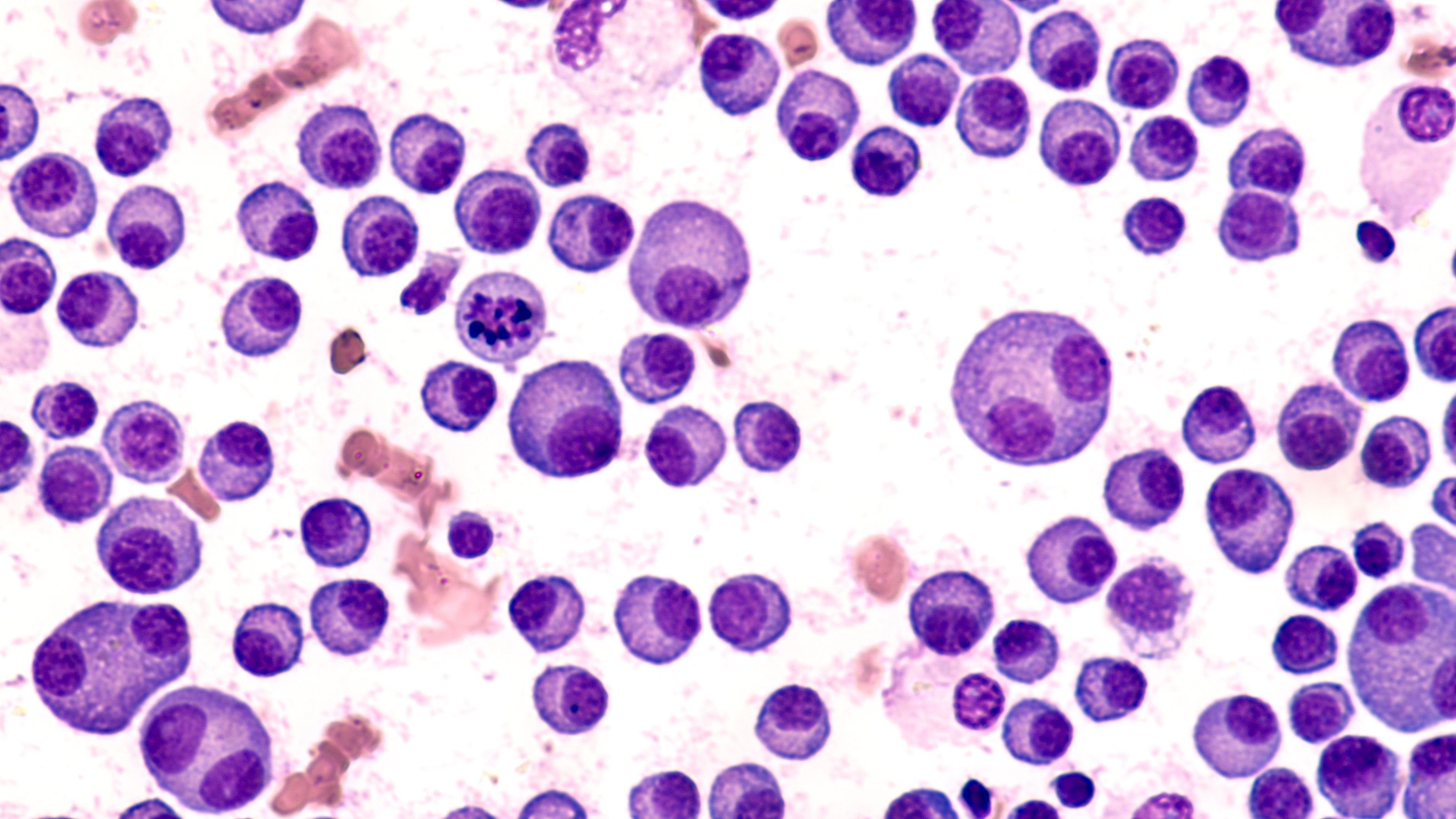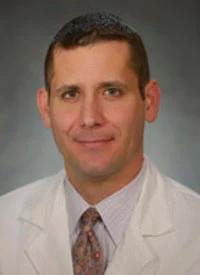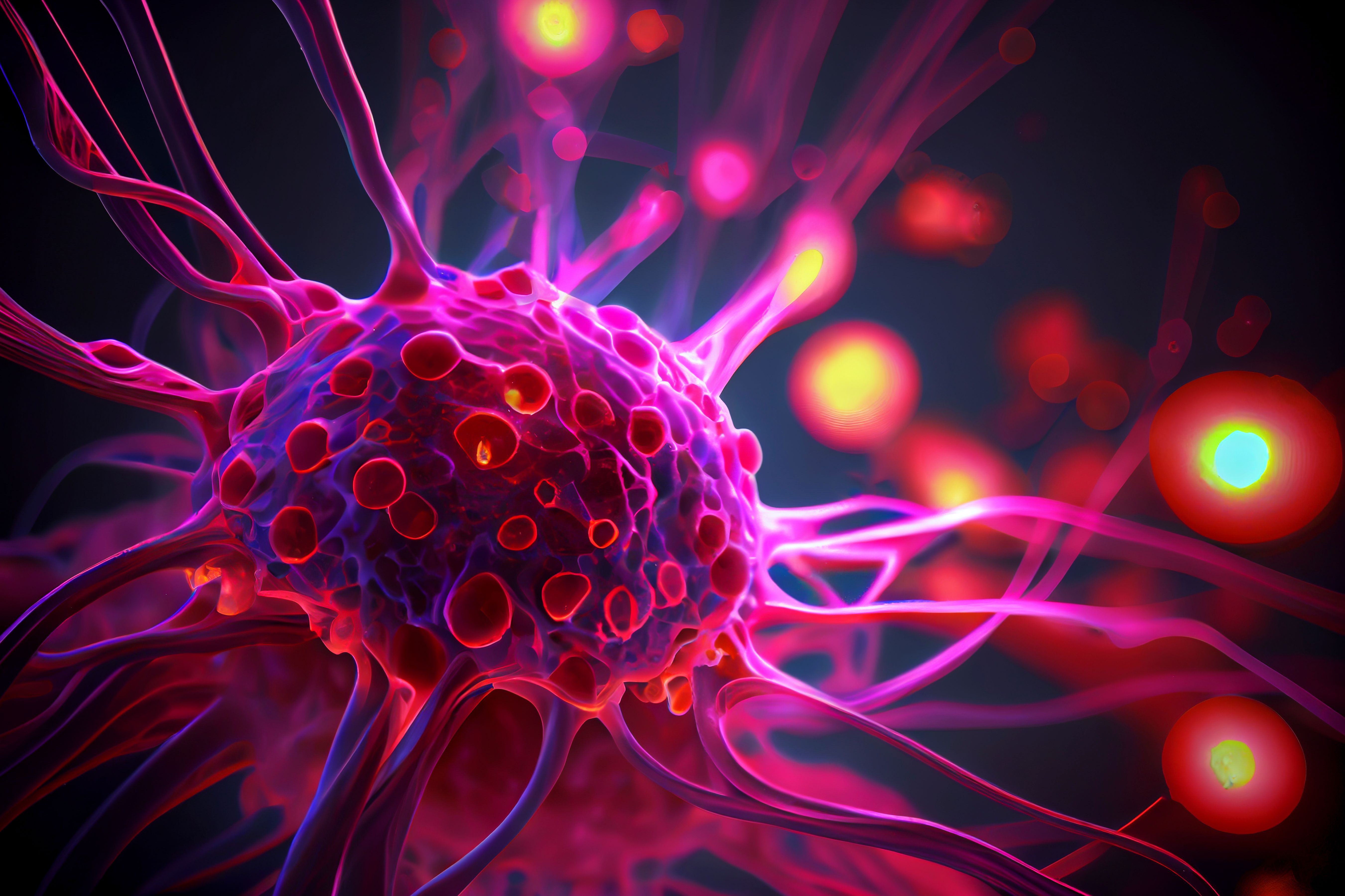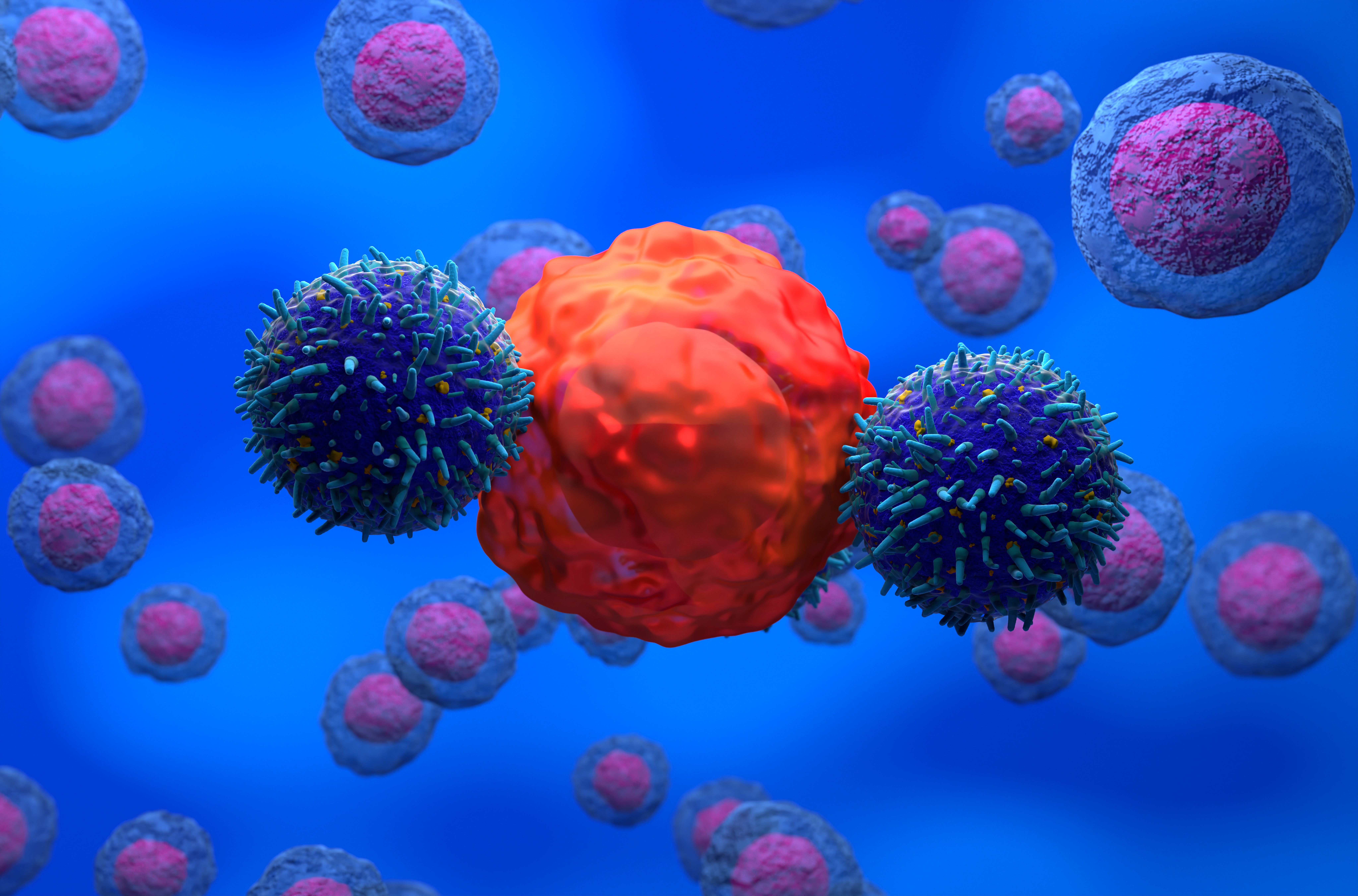Enhancing Outcomes in Myeloma With CAR T Cells and Bispecific Antibodies
March is Multiple Myeloma Awareness Month and experts like Amrita Krishnan, MD, and Adam D. Cohen, MD, explained the positive impact CAR T-cell therapies and bispecific antibodies have had in the space.
Bone marrow aspirate cytology of multiple myeloma: ©David A Litman - stock.adobe.com

While multiple myeloma remains incurable, the treatment landscape is rapidly evolving. This has offered oncologists a growing armamentarium to combat this complex disease.
According to experts like Amrita Krishnan, MD, and Adam D. Cohen, MD, the recent breakthroughs in chimeric antigen receptor (CAR) T-cell therapy and bispecific antibodies have shown the most promise in this space through their positive impact on patient outcomes.
Advancements in Multiple Myeloma Research and Treatment
CAR T-Cell Therapy
Among the many recent developments in the multiple myeloma space, Cohen and Krishnan are particularly excited about the emergence of T-cell engagers, such as CAR T-cell therapy. Over the last few years, this type of therapy has garnered considerable attention.
Amrita Krishnan, MD

“There has been an explosion of new therapies for multiple myeloma, especially in the past 3 to 4 years, particularly [with] T-cell redirecting therapies, so CAR T cells and bispecific antibodies,” explained Cohen, associate professor of medicine at the Hospital of the University of Pennsylvania, in an interview with Targeted OncologyTM. “They are making a big difference for our patients, particularly [those] with relapsed/refractory myeloma.”
For multiple myeloma that has relapsed or is refractory after at least 4 prior treatments, there are currently 2 FDA-approved CAR T-cell therapies available: idecabtagene vicleucel (ide-cel; Abecma) and ciltacabtagene autoleucel (cilta-cel; Carvykti). These approvals were supported by data from the pivotal phase 2 KarMMa study (NCT03361748), and phase 1b/2 CARTITUDE-1 study (NCT03548207), respectively.1,2
In the KarMMa trial (NCT03361748), 100 patients were dosed with 300 to 460 x 106 CAR-positive T cells. Among those treated with ide-cel, deep and durable responses were observed with an objective response rate (ORR) of 72% (95% CI, 62%-81%) with stringent CRs (sCR) in 28% (95% CI, 19%-38%) of patients.1 The median time to response was 30 days (range, 15-88) and responses were durable.
Among those in the all-responder population, the median duration of response (DOR) was 11 months (95% CI, 10.3-11.4). Of the patients who achieved a sCR, the median DOR was 19 months (95% CI, 11.4-not evaluable [NE]). Notably, of the patients in the sCR population, remission lasted for 12 months or more in 65% (95% CI, 42%-81%).
Adam D. Cohen, MD

Then in the CARTITUDE-1 study, cilta-cel was given to patients via single infusion at a dose range of 0.5 to 1.0 x 106 CAR-positive viable T cells per kilogram of body weight.2 The ORR was 98% (95% CI, 92.7%-99.7%), and the sCR rate was 78% (95% CI, 68.8%-86.1%). At a median follow-up of 18 months, the median DOR was 21.8 months (95% CI, 21.8-NE).
CAR T-cell therapy holds promise, especially for patients with advanced myeloma as these genetically engineered immune cells work by targeting specific antigens that exist on myeloma cells. These agents harness the body's immune system to precisely recognize and eliminate malignant cells.
“My bias, though, is if I can use CAR [T-cell therapy] in a patient, then I’ll use it. But if we can’t use CAR T-cell therapy, I would love to use the combination of teclistamab-cqyv [Tecvayli] and talquetamab [Talvey],” Surbhi Sidana, MD, said during an Oncology Town Hall™ virtual meeting sponsored by Physicians Education Resource® (PER®).
“We are looking for potential approvals of both BCMA-directed CAR T cells in earlier lines of therapy. I think that will be a huge step forward if that gets approved,” said Krishnan, director of Judy and Bernard Briskin Center for Multiple Myeloma Research at City of Hope, executive medical director of Hematology, City of Hope Irvine, in an interview with Targeted OncologyTM.
Bispecific Antibodies
Bispecific antibodies have also emerged as an encouraging therapeutic strategy. According to Krishnan, these therapies have already shown positive efficacy results within clinical trials. Durable responses and prolonged survival have been observed within patients who are heavily pretreated.
“We have both BCMA-directed and GPRC5D-directed [bispecific antibodies]. [We are] very excited in regards to options patients have for prior lines of therapy severity advanced myeloma is showing across the board [that] over 50% of patients are responding. Many of these patients are triple-class refractory, so to have options that are off-the-shelf for such advanced myeloma has been a tremendous game changer for many patients,” explained Krishnan.
“In 2023, we saw the approval of 2 new bispecific antibodies for multiple myeloma. One is called elrenatomab, a BCMA-targeted treatment, and 1 is called talquetamab, hitting a new target, GPRC5D. Then teclistamab, which was the prior bispecific antibody, was approved in late 2022. Now we have 3 of these off-the-shelf, very potent T-cell engaging bispecific antibodies to treat myeloma,” added Cohen.
The FDA first granted an accelerated approval to teclistamab for the treatment of adult patients with relapsed or refractory multiple myeloma who have received 4 or more prior lines of therapy, including a proteasome inhibitor, an immunomodulatory agent, and an anti-CD38 monoclonal antibody, in October 2022. This approval was supported by findings from the phase 1/2 MajesTEC-1 trial (NCT03145181; NCT04557098) in which teclistamab produced an ORR of 61.8% (95% CI, 52.1%-70.9%).3
Then in August 2023, the FDA granted accelerated approval to elranatamab-bcmm (Elrexfio) for the treatment of adult patients with relapsed or refractory multiple myeloma who have received at least 4 prior lines of therapy, including a proteasome inhibitor, an immunomodulatory agent, and an anti-CD38 monoclonal antibody, and a first-in-class bispecific antibody, for the treatment of adult patients for the same indication.4,5
Approval for elranatamab was based on findings from cohort A (n = 123) of the MagnetisMM-3 (NCT04649359). Here, the agent led to an ORR by blinded independent central review of 58%. Eighty-two percent of patients continued their response for a minimum of 9 months.4 In addition, the approval included a subgroup of patients who received at least 4 previous lines of therapy. The ORR shown in cohort B of the study (n = 64) was 33% at a median follow up of 10.2 months, and approximately 84% of this cohort had ongoing responses for at least 9 months.
Generative AI illustration of cancer cells: © Dr_microbe - stock.adobe.com

Findings from the phase 2 MonumenTAL-1 study (NCT04634552) then served as the basis for the talquetamab approval.5 Among patients who had received 4 or more prior lines of therapy and who were not exposed to prior T-cell redirection therapy (n = 187) in the study, the ORR was 73.6% ((95% CI, 63.0-82.4)among patients treated with the biweekly dose of 0.8 mg/kg.
These options show immense potential for a new era of treatment for patients with multiple myeloma.
“The emergence and approval of bispecific antibodies in multiple myeloma expands our armamentarium to treat patients,” added Sidana during the meeting. “I think it’s wonderful that we have so many choices with even more approaches on the horizon, including linvoseltamab. We anticipate additional FDA approvals in the near future.”
These options continue to be explored and move closer to gaining approval for use in earlier lines of therapy. Ongoing research and clinical trials are exploring novel targets and combination therapies with these types of therapeutics.
“There are a lot of real-world comparisons with standard of care options. One could surmise that outcomes are better because [we] have agents now that response rates are more than double what [we have] seen with the other options in this advisory lab setting.”
Challenges of Multiple Myeloma Treatment
Adverse Effects
CAR T cell attacks cancer cells: © LASZLO - stock.adobe.com

A number of unmet needs still exist for patients with multiple myeloma. Of note, 1 major concern, according to Krishnan, is managing the potential adverse effects of treatment, particularly the risk of infection.
“I think some of the challenges have been mitigating toxicities, especially infection risk, that could potentially impact overall survival outcomes,” said Krishnan.
As treatments evolve, researchers are continually refining treatment schedules and durations to minimize these risks.
“As we get more experienced, we will learn how to best use drugs in terms of schedule [and] duration of therapy, which will also help mitigate infection risk,” added Krishnan.
Treating High-Risk Patients
There are also certain patient groups that present unique challenges. For instance, patients with preexisting kidney problems often require particularly swift and aggressive treatment to try and preserve kidney function.
“[For] patients who present with renal failure…starting therapy quickly and being extremely aggressive about the therapy that [we] start is important to be able to try and salvage kidney function,” said Krishnan.
Another high-risk group facing challenges are patients with extramedullary disease, where myeloma cells spread beyond the bone marrow. These patients often have poorer responses and shorter durations of response to therapy.
“Patients with extramedullary disease tend to be extremely challenging in terms of responses to therapies, and durability of those responses. Being aware that those patients are sort of functionally high-risk patients,” Krishnan noted.
Precision Medicine and Relapsed Disease
Precision medicine consists of tailoring treatments to individual patients' genetic makeups. This strategy holds promise for understanding how myeloma cells become resistant to treatment.
A big part of precision medicine lies in seeing how it can help in trying to understand mechanisms of resistance, for example, in specific patients. Through the identification of the cause of treatment failure, clinicians may be able to design potentially better treatment sequences.
“I think the biggest need now is for patients with relapsed disease. As we speak more about sequencing therapy, because we have very targeted therapies against BCMA, against GPRC5D, the question is, once you relapse after 1 of those targeted therapies, why did you progress up to that therapy? Is it mutations in the target? Is it immune fitness, your T-cell house, so it helps us then sequence the next therapy?”
Another area within multiple myeloma that requires further research is central nervous system (CNS) involvement in myeloma relapse as it often presents a significant challenge for patients.
“CNS myeloma remains an extremely challenging area when patients relapse with either with leptomeningeal disease or CNS disease. It is 1 of the biggest unmet needs right now that we have,” said Krishnan.
Similarly, a more aggressive form of leukemia known as plasma cell leukemia remains difficult to treat. According to Krishnan, these patients are challenging to treat as they often “have very aggressive and rapidly proliferating disease.”
“Because CAR T cells, for example, take a while to manufacture, those patients may progress before [we] can even give them CAR T cells.”
As a result, better bridging strategies for patients before CAR T-cell therapy remains an unmet need. While significant progress has been in the multiple myeloma treatment landscape, there are still several areas where researchers aim to improve patient outcomes. By addressing challenges like treatment-related toxicities, high-risk patient populations, and specific disease variants, the future of multiple myeloma treatment looks promising.
Moving Forward With Myeloma Research
As experts continue to improve outcomes for patients with multiple myeloma, research is shifting towards earlier intervention and personalized treatments. With the various approved options, the focus is shifting towards using CAR T-cell therapies and bispecific antibodies earlier in the course of treatment. This approach will hopefully be utilized for newly diagnosed patients or those who have previously undergone a stem cell transplant.
“We are looking again at precision medicine and more using genomics to help us better define sequences of therapies with relapsed disease. Then, we are looking for [minimal residual disease]-directed therapies of some large trials to help us decide if we can actually abrogate therapies and patients with sustained deep responses,” said Krishnan.
“We are fortunate to have many new trials coming out. Starting with the existing agents, there are a number of studies that are moving T cells or bispecifics much earlier in the course of myeloma treatment and not waiting until patients have had 3, 4, or 5 lines of therapy,” added Cohen.
According to Cohen, there are some small pilot studies that have already been done showing feasibility. Now some larger, international, randomized, phase 3 trials of CAR T cells or bispecifics are going head-to-head with standard therapies, including stem cell transplant.
“We were also hoping that moving these earlier may make them work better and perhaps get to that elusive cure,” said Cohen.
As investigators await the results from these trials, experts like Krishnan and Cohen emphasize the crucial role community oncologists play in navigating these complex treatment options and partnering with patients for the best possible care.
“[Community oncologists] should understand that we are their partners. We understand myeloma is a confusing disease and there are so many different drugs. It is challenging to know how to optimally use them and in what sequence and we are happy to see patients and work with them as partners to best navigate that,” said Krishnan.
REFERENCES:
1. Munshi NC, Anderson LD Jr, Shah N, et al. Idecabtagene Vicleucel in Relapsed and Refractory Multiple Myeloma. N Engl J Med. 2021;384(8):705-716. doi:10.1056/NEJMoa2024850
2. JG, Madduri D, Usmani SZ, et al. Ciltacabtagene autoleucel, a B-cell maturation antigen-directed chimeric antigen receptor T-cell therapy in patients with relapsed or refractory multiple myeloma (CARTITUDE-1): a phase 1b/2 open-label study [published correction appears in Lancet. 2021 Oct 2;398(10307):1216]. Lancet. 2021;398(10297):314-324. doi:10.1016/S0140-6736(21)00933-8
3. Moreau P, Garfall AL, van de Donk NWCJ, et al. Teclistamab in relapsed or refractory multiple myeloma. N Engl J Med. 2022;387(6):495-505. doi:10.1056/NEJMoa2203478
4. Lesokhin AM, Tomasson MH, Arnulf B, et al. Elranatamab in relapsed or refractory multiple myeloma: phase 2 MagnetisMM-3 trial results. Nat Med. 2023;29(9):2259-2267. doi:10.1038/s41591-023-02528-9
5. Chari A, Minnema MC, Berdeja JG, et al. Talquetamab, a T-cell-redirecting GPRC5D bispecific antibody for multiple myeloma. N Engl J Med. 2022;387(24):2232-2244. doi:10.1056/NEJMoa2204591
Enhancing Precision in Immunotherapy: CD8 PET-Avidity in RCC
March 1st 2024In this episode of Emerging Experts, Peter Zang, MD, highlights research on baseline CD8 lymph node avidity with 89-Zr-crefmirlimab for the treatment of patients with metastatic renal cell carcinoma and response to immunotherapy.
Listen